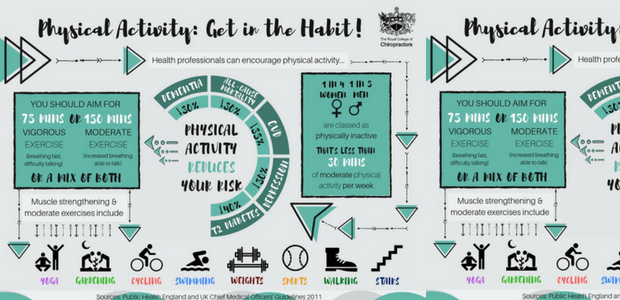Essential Daily Behaviors That Can Cause Pain In The Back And Exactly How To Stay Away From Them
Essential Daily Behaviors That Can Cause Pain In The Back And Exactly How To Stay Away From Them
Blog Article
Content Create By-Mckay Vogel
Keeping proper stance and preventing usual challenges in daily activities can significantly impact your back wellness. From just how you rest at your workdesk to exactly how you lift heavy things, tiny changes can make a huge distinction. Think of a day without the nagging neck and back pain that impedes your every step; the solution could be less complex than you believe. By making a few tweaks to your daily habits, you could be on your means to a pain-free presence.
Poor Posture and Sedentary Way Of Life
Poor position and an inactive way of life are two significant factors to pain in the back. When you slouch or hunch over while resting or standing, you placed unneeded pressure on your back muscle mass and back. This can result in muscle mass discrepancies, stress, and at some point, chronic back pain. Furthermore, sitting for extended periods without breaks or physical activity can deteriorate your back muscles and bring about rigidity and discomfort.
To combat inadequate posture, make a conscious effort to rest and stand up directly with your shoulders back and aligned with your ears. Bear in mind to maintain your feet level on the ground and avoid crossing your legs for extended durations.
Including routine extending and reinforcing exercises into your day-to-day routine can also assist improve your stance and ease back pain associated with an inactive way of life.
Incorrect Training Techniques
Inappropriate training techniques can substantially contribute to neck and back pain and injuries. When you raise heavy items, remember to bend your knees and use your legs to raise, as opposed to counting on your back muscle mass. Avoid twisting your body while training and keep the object near to your body to decrease pressure on your back. It's critical to preserve a straight back and prevent rounding your shoulders while raising to prevent unneeded pressure on your spine.
Constantly evaluate the weight of the things prior to raising it. If it's as well heavy, request assistance or usage devices like a dolly or cart to transport it safely.
Remember to take breaks during raising tasks to offer your back muscles a possibility to rest and avoid overexertion. By implementing appropriate training strategies, you can protect against back pain and decrease the risk of injuries, ensuring your back stays healthy and strong for the long-term.
Absence of Normal Workout and Extending
An inactive lifestyle devoid of normal workout and extending can significantly contribute to back pain and discomfort. When you don't engage in exercise, your muscles come to be weak and stringent, causing inadequate pose and increased pressure on your back. https://www.belmarrahealth.com/long-sciatica-last/ strengthen the muscular tissues that sustain your spine, enhancing stability and reducing the risk of neck and back pain. Including stretching into your regimen can also improve adaptability, stopping rigidity and discomfort in your back muscular tissues.
To avoid pain in the back triggered by a lack of workout and extending, go for a minimum of half an hour of modest exercise most days of the week. Consist of workouts that target your core muscle mass, as a strong core can aid ease stress on your back.
Additionally, take breaks to extend and move throughout the day, especially if you have a desk job. Straightforward stretches like touching your toes or doing shoulder rolls can assist ease tension and avoid pain in the back. Prioritizing regular exercise and stretching can go a long way in keeping a healthy and balanced back and minimizing discomfort.
Verdict
So, keep in mind to stay up directly, lift with your legs, and stay active to prevent pain in the back. By making simple changes to your daily behaviors, you can avoid the discomfort and constraints that come with pain in the back. Deal with your spinal column and muscles by practicing great posture, correct lifting techniques, and normal exercise. Your back will thanks for it!
